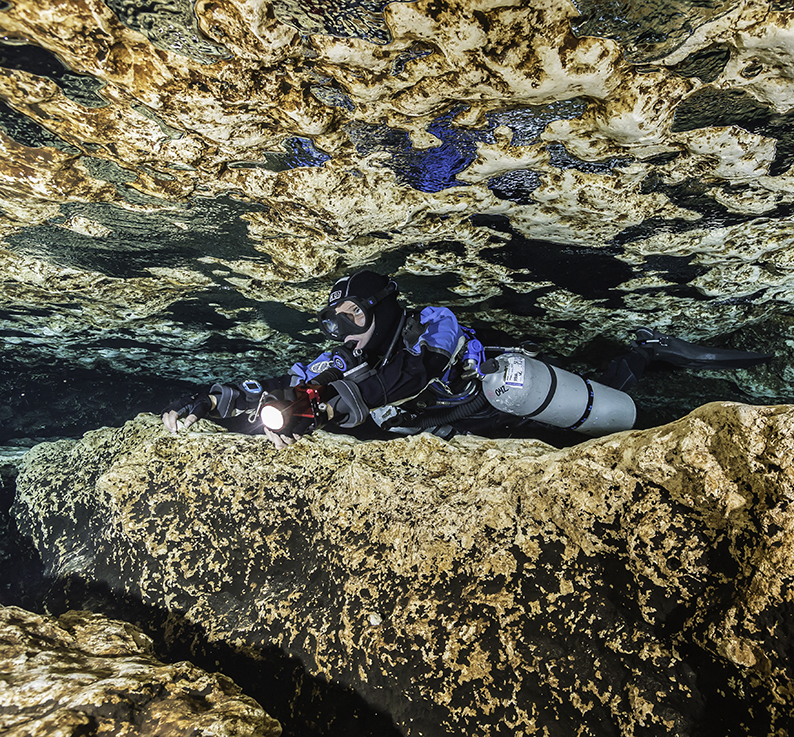Sidemount Cave Diver
SIDEMOUNT CAVE Diver
WHY TAKE THIS COURSE?
The GUE Sidemount Cave Diver course provides an opportunity for experienced GUE Cave 2 divers to familiarize themselves with side mount equipment configuration. A sidemount configuration provides an opportunity to experience, enjoy and explore areas that are too small for the standard GUE backmount configuration.
This class helps divers to develop a specific skill set and knowledge base to safely plan and execute dives in small and/or restrictive passages
WHO IS IT FOR?
Divers planning to take the GUE Sidemount Cave Diver class are expected to have a high level of fundamentals and cave diving skills as well as a high comfort level in an overhead environment and a reasonable amount of cave diving experience.
WHAT WILL I LEARN?
The course’s intended outcomes are to help divers understand the techniques required to safely navigate confined cave passageways and the advantages and disadvantages of a sidemount equipment configuration.
Applicants for a GUE Sidemount Cave Divercourse program must:
- Be a minimum of 18 years of age.
- Be physically and mentally fit.
- Be a non-smoker.
- Be able to swim.
- Obtain a physician’s prior written authorization for use of prescription drugs, except for birth control, or for any medical condition that may pose a risk while diving.
- Have earned a Cave Diver 2 certification.
- Have a minimum of 50 logged dives beyond Cave Diver 2 certification
- Have a minimum of 200 dives beyond autonomous entry-level scuba diver (or equivalent)
- For a full list of course prerequisites, click here.
The GUE Sidemount Cave Diver course is normally conducted over five days. It requires ten dives (of which four must include restrictive passages) and at least forty hours of instruction, encompassing classroom lectures, land drills, and in-water work.

TAKE THE NEXT STEP
DPV CAVE
Since failure of a DPV in an overhead environment might expose divers to a high level of risk, an in-depth knowledge of gas management and contingency planning is required to use a DPV safely during such dives which DPV Cave course provides.
UNDERWATER CAVE SURVEY
During the class, team-based survey procedures and dive planning are introduced together with additional tools and specialized equipment.




